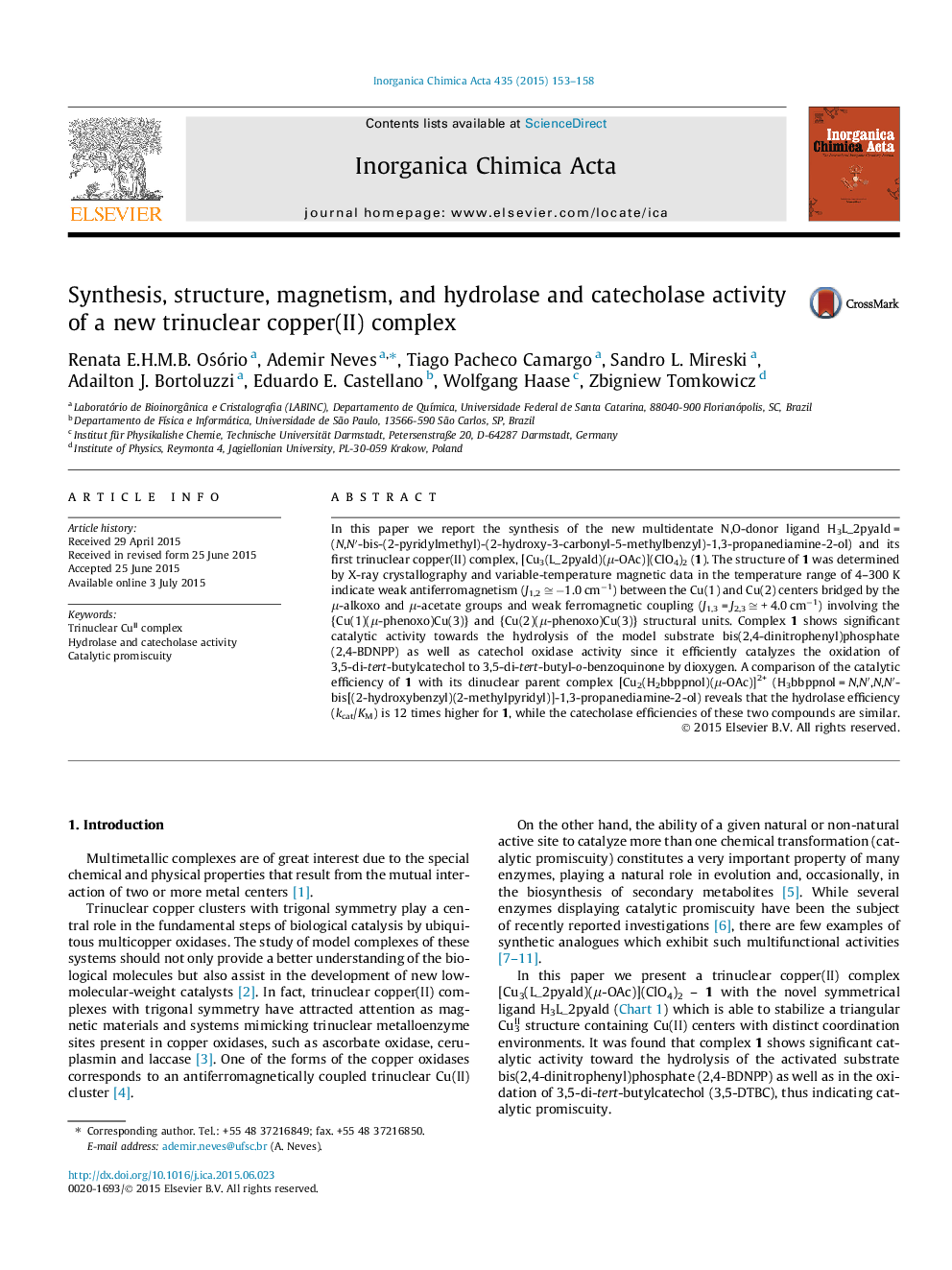| Article ID | Journal | Published Year | Pages | File Type |
|---|---|---|---|---|
| 1308953 | Inorganica Chimica Acta | 2015 | 6 Pages |
•Trinuclear copper(II) complex using a new symmetric ligand.•Synthesis, X-ray structure and magnetic properties of the trinuclear catalyst.•Ability of the complex to catalyze different chemical reactions (catalytic promiscuity).
In this paper we report the synthesis of the new multidentate N,O-donor ligand H3L_2pyald = (N,N′-bis-(2-pyridylmethyl)-(2-hydroxy-3-carbonyl-5-methylbenzyl)-1,3-propanediamine-2-ol) and its first trinuclear copper(II) complex, [Cu3(L_2pyald)(μ-OAc)](ClO4)2 (1). The structure of 1 was determined by X-ray crystallography and variable-temperature magnetic data in the temperature range of 4–300 K indicate weak antiferromagnetism (J1,2 ≅ −1.0 cm−1) between the Cu(1) and Cu(2) centers bridged by the μ-alkoxo and μ-acetate groups and weak ferromagnetic coupling (J1,3 = J2,3 ≅ + 4.0 cm−1) involving the {Cu(1)(μ-phenoxo)Cu(3)} and {Cu(2)(μ-phenoxo)Cu(3)} structural units. Complex 1 shows significant catalytic activity towards the hydrolysis of the model substrate bis(2,4-dinitrophenyl)phosphate (2,4-BDNPP) as well as catechol oxidase activity since it efficiently catalyzes the oxidation of 3,5-di-tert-butylcatechol to 3,5-di-tert-butyl-o-benzoquinone by dioxygen. A comparison of the catalytic efficiency of 1 with its dinuclear parent complex [Cu2(H2bbppnol)(μ-OAc)]2+ (H3bbppnol = N,N′,N,N′-bis[(2-hydroxybenzyl)(2-methylpyridyl)]-1,3-propanediamine-2-ol) reveals that the hydrolase efficiency (kcat/KM) is 12 times higher for 1, while the catecholase efficiencies of these two compounds are similar.
Graphical abstractThe synthesis, X-ray structure, magnetochemistry and catalytic promiscuity (diesterase and catecholase activity) of a new trinuclear CuIII complex are here reported.Figure optionsDownload full-size imageDownload as PowerPoint slide
